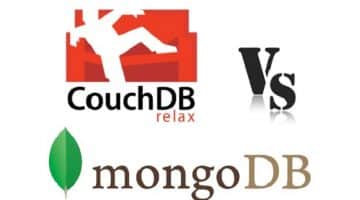Most of grow up learning about RDBMS at college. RDBMS is no doubt the best thing for learning, but when it comes into the practical world, RDBMS is not that great. It fails in certain areas such as performance during extreme load, and there is less scope of scalability with minimal effort, and therefore, it does not qualify as flexible. That is why NoSQL clicks in as it answers all the shortcomings of RDBMS. In the corporate world, NoSQL is used, and it can store unstructured data, session data, media data, and data from IoT devices as well. The two most popular NoSQL databases are DynamoDB and MongoDB. The following is a list of differences between the two popular NoSQL databases.
Differences Between DynamoDB and MongoDB –
DynamoDB is from Amazon, and it is a fully managed NoSQL database. It is known for its performance, and you can let the DynamoDB team take care of the hardware supervision and cluster scaling. This lets you focus on the main aspect of the development. You can scale up and down as per your requirement, and this will not impact the performance. On the other hand, MongoDB is an open-source database, and it has JSON-type schemas. There are various features that ensure efficient storage, scaling, retrieving, and much more.
Data Model –
DynamoDB uses the key-value data model, and it also supports JSON-type document data structure. There is limited data type support from DynamoDB than MongoDB. There is only one numeric data type, and there is no provision for dates. This adds complicity in development, and there is no provision for data validation.
MongoDB stores data in JSON-like format, and there is support for various data types for easy development. MongoDB documents are capable of storing 16MB of data. There is also a schema validation feature available.
Setup – DynamoDB is very easy to setup when you compare that with MongoDB. DynamoDB is a part of AWS, and all you have to do is go to AWS console and use the wizards to set it up instantly. On the contrary, MongoDB is slightly difficult to setup, especially for novices. The errors in authentications are different to understand, and it will take you a few hours to a complete day. This is because there is no clear documentation available and it is tailor-made for Ubuntu terminal. Therefore, if you have some other operating system, it is going to be troublesome to set it up. Going for the paid version of MongoDB will be easier.
Security –
Security is a prime concern in today’s world, especially when it comes to a database where all the personal data are stored. There have been cases of MongoDB getting hacked by ransomware attacker. This is because of a vulnerability in MongoDB in the remote accessibility feature. The default configuration is still not strong, and a user has to know how to turn on authentication and take other security measures using the features available. On the other hand, DynamoDB is highly secured or at least more secure than MongoDB. It has the same security measures as AWS.
Queries –
Queries are the most important aspect of any database. MongoDB allows the developers to use queries in different ways such as single key, graph traversal, geospatial queries, range, faceted search, and much more. Executing complex queries is relatively easy with MongoDB’s query language. The developers can avoid latency, and it allows faster access to data. Besides, there is support for multi-document transactions. DynamoDB supports key-value query which is why the latency and complicity increase significantly. There are additional AWS technologies to be used like Redshift and Elastic MapReduce.
Deployment –
MongoDB is open-source, and hence, it can run anywhere like a different operating system, different cloud hosts, and likewise. On the other hand, DynamoDB can run only on AWS. It can run on the local machine after downloading for modification and other developments.
Overall, DynamoDB is better than MongoDB in terms of setup, storage, and security. But MongoDB is easy to use, and it totally depends on the comfort level of the programmer. As far as the pricing goes, DynamoDB can be expensive when you have high read and write capacity. On the flip side, MongoDB can be expensive when you have to scale up to meet your storage needs.
- Top 6 SEO Tools to Boost Your Business - January 18, 2024
- Top PHP interview questions and answers 2020 - July 7, 2020
- How to create a Whatsapp account using the Australian number? - June 28, 2020




